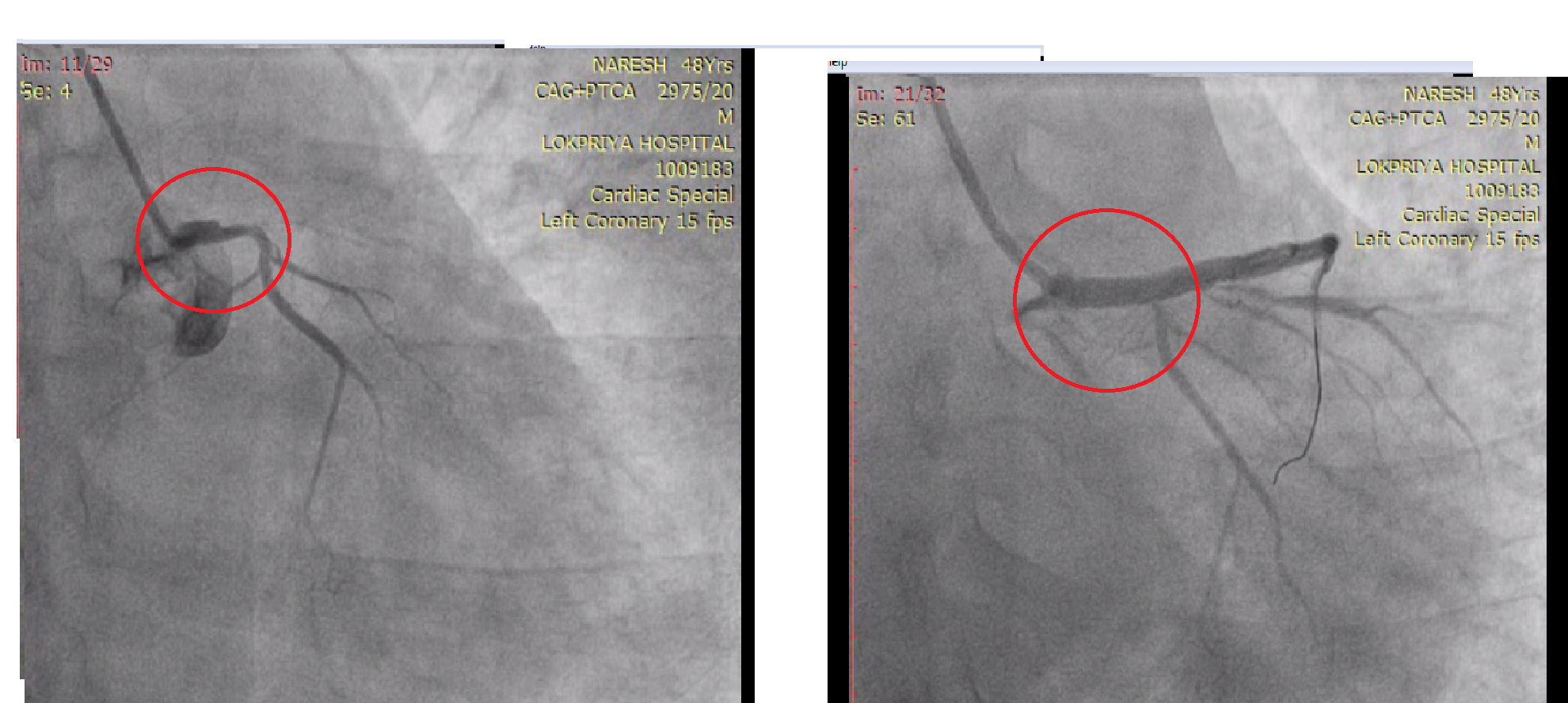CASE20210729_003
Primary Angioplasty of Left Main in ACS
By
Presenter
Hariom Tyagi
Authors
1
Affiliation
, India1
High-Risk Intervention (diabetes, heart failure, renal failure, shock, etc) - High-Risk Intervention
Primary Angioplasty of Left Main in ACS
1
, India1
Clinical Information
Patient initials or Identifier Number
NK
Relevant Clinical History and Physical Exam
C/O Chest pain, sweating, associated with generalized weakness since 10 days, symptoms increased 1day prior to admission.Diagnosis – : CAD/ACS/ACUTE AWMI/SEVERE LV SYSTOLIC DYSFUNCTION/LVEF=30%/MILD MR ECG- Acute anterolateral infarct
Relevant Test Results Prior to Catheterization
Left Main with Single Vessel Disease, Left Main: Distal 70-80% disease. LAD: Ostial 100% occlusion.LCX: Nondominant, Normal.OM1 & OM2: Normal.RCA: Super dominant, Normal.PDA/PLV: Normal.
Relevant Catheterization Findings
Left Coronary Artery : was engaged with JL 3.5, 6F guide catheter. A 0.014” SION BLUE wire was used to cross the Left Main to LAD lesion. Pre dilatation done with SC Sapphire Balloon 2.0 10 mm @ 12atmosphere. Drug Eluting Stent XIENCE PRIME LL 3.5 38 mm deployed in proximal LAD @ 12atmosphere and another Drug Eluting Stent RESOLUTE ONYX 3.5 18 mm deployed in Left Main to LAD


Interventional Management
Procedural Step
Left Coronary Artery : was engaged with JL 3.5, 6F guide catheter. A 0.014” SION BLUE wire was used tocross the Left Main to LAD lesion. Pre dilatation done with SC Sapphire Balloon 2.0 10 mm @ 12atmosphere. Drug Eluting Stent XIENCE PRIME LL 3.5 38 mm deployed in proximal LAD @ 12atmosphere and another Drug Eluting Stent RESOLUTE ONYX 3.5 18 mm deployed in Left Main toproximal LAD @ 14 atmosphere. Overlapping the proximal stent. Post dilatation done with NC SapphireBalloon 3.5 10 mm @ 14 atmosphere in LAD and NC Sapphire Balloon 4.0 10 mm @ 16 atmosphere inLeft Main. GP IIb IIIa inhibitor was used during the procedure. Excellent result with TIMI III flow.Successful PTCA with stenting to Left Main to LAD
 LEFT MAIN TO LAD (CTO) &.pptx
LEFT MAIN TO LAD (CTO) &.pptx
Case Summary
Percutaneous intervention with stent implantation for LMCA disease has become a standard procedure in contemporary practice with safety, expedited recovery, and durability. Precise selection of the strategy aided by intracoronary imaging, functional evaluation, and mechanical support when needed have improved the immediate and long-term results in this high risk intervention. It is however important to have a team approach and operator expertise before embarking on LMCA interventions
